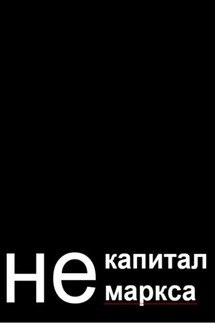The General Theory of Capital: Self-Reproduction of Humans Through Increasing Meanings - страница 16
“The brain is heavily influenced by genes. But from birth through young adulthood, the part of the human brain that most defines us is less a product of the genes with which you started life than of what life has thrown at you. Because it is the last to mature, by definition the frontal cortex is the brain region least constrained by genes and most sculpted by experience. This must be so, to be the supremely complex social species that we are. Ironically, it seems that the genetic program of human brain development has evolved to, as much as possible, free the frontal cortex from genes” (Sapolsky 2017, p. 173).
The development of reason, with its broad norm of reaction, is synonymous to the development of counterfacts (counterfactuals). Counterfacts are, one might say, alternative facts—actions and things that could have been but were not done, that were not added to the stable cultural repertoire and were not passed on through learning. Counterfacts arose along with meanings as their random versions brought about by variations in plans and actions. In itself, this randomness was only the intersection of existing patterns: “what we see as fundamental randomness may be the result of simple interacting rules” (Page 2009, p. 38). As meanings evolved, counterfacts began to acquire their own meaning, transforming into an alternative world of “as ifs.” In his Book of Why (2018), Judah Pearl cites as an example of a counterfact a figurine carved from the tusk of a mammoth 40,000 years ago—the “Lion Man” as a fantastic cross between man and animal (Pearl and Mackenzie 2018, pp. 34-5).
Pearl identifies three rungs on the ladder leading to knowledge of causes: “seeing,” “doing,” and “imagining.” On the first rung are animals and computers, which learn through association (Ivan Pavlov spoke of conditioned reflexes here). On the second rung are early humans who intervene in events, use tools, and act according to a plan rather than simply imitating, and children who experiment and learn from experience. Finally, on the top rung are “counterfactual learners” who “can imagine worlds that do not exist and infer reasons for observed phenomena” (Pearl and Mackenzie 2018, p. 28).
The evolution of meanings began as mixed selection but continued as choice (cultural election, to use a Latin term). Unlike cultural selection, cultural choice is an evolutionary variation of meanings, achieved by the alternation of generations not of humans, but of meanings. At this stage, the development of meanings gets independence from the development of the human body. Meanings cease to be an extension of the human organism and become a substance external to it. From the object of biocultural co-evolution, man transforms to its subject, taking on the function of denying facts, generating counterfacts and accelerating their selection. The evolving ability to deny the facts raised human understanding to reason. Nikita Moiseev called this the transition “from the strategy of nature to the strategy of reason” (Moiseev 1990, p. 223). If mixed selection was a joint action of the forces of nature and culture, then choice is a purposeful human action. Choice is both an action and a result of an action, that is, the choice between counterfacts is itself a (counter)meaning.
In his lecture course







